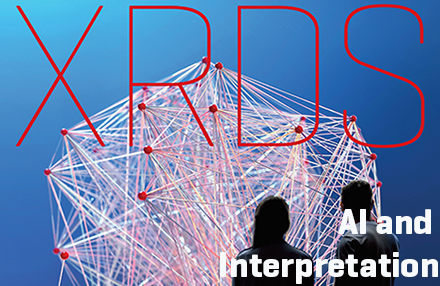Magazine: Spring 2019 | Volume 25, No. 3

The uses of artificial intelligence (AI) or intelligent, data-driven computational systems are rapidly growing. AI’s wide reach is evident even in popular discourse, where hardly a news cycle goes by without our attention drawn to some new domain application for AI. As AI systems become more commonplace, a number of questions arise as people must make sense of and interpret the actions of such systems as they interact with and otherwise encounter such systems.
This issue of XRDS features a selection of articles that cover a wide spread of domain areas, highlighting the breadth of domains and application areas implicated by contemporary AI and data-driven computational systems. The contributed articles highlight the range of ways that people interact with such systems and the unique sets of interpretive concerns that arise from such settings.
Download
- Digital Edition web-based magazine available for subscribers – sign in
- PDF via ACM’s Digital Library
DEPARTMENT: Updates
BPDC ACM: Using social media marketing to bolster membership
By Anshuman Majumdar
COLUMN: Careers
Do you want to become an AI and machine learning software engineer?
By Shekhar Patankar
SECTION: Features
Explaining explainable AI
How good are you at explaining your decisions? Are you better than a machine? Today, AI systems are being asked to explain their decisions. This article explores the challenges in solving this problem and approaches researchers are pursuing.
By Michael Hind
"But why?" Understanding explainable artificial intelligence
Opaque algorithms get to score and choose in many areas using their own inscrutable logic. To whom are said algorithms held accountable? And what is being done to ensure explainability of these algorithms?
By Tim Miller
Trustworthy machine learning and artificial intelligence
How can we add the most important ingredient to our relationship with machine learning?
By Kush R. Varshney
The future of pedestrian-automated vehicle interactions
While the increasing popularity of autonomous vehicles has garnered critical media attention, less has been written about the field of pedestrian-automated vehicle interactions and its challenges. Current research trends are discussed as well as several areas receiving much less attention, but are still vital to the field.
By Lionel P. Robert
Artificial intelligence for software engineering
Artificial intelligence is predicted to impact many industries (including the software industry), changing how we produce, manufacture, and deliver. The rise of artificial intelligence may significantly transform the practice of software engineering, helping us build better software faster.
By Hoa Khanh Dam
The AI revolution
This article explores the areas of bias in natural language processing, from the tools that are used to analyze the data to the fundamental theories in the field. It delves deeper into the very idea that the data that is analyzed (language) itself shapes human perception of reality, and evolves over time.
By Talia Kohen
Co-creating the future of work: Lessons from workplace automation
What sociology and ethnography can teach us about designing the workplace technologies of tomorrow.
By Christine T. Wolf
That's not fair!
Why we need to study machine learning fairness, even in an increasingly unfair world.
By Deborah Raji
Facial recognition is the plutonium of AI
It's dangerous, racializing, and has few legitimate uses; facial recognition needs regulation and control on par with nuclear waste.
By Luke Stark
Robot, all too human
Advanced robotics and artificial intelligence systems present a new challenge to human identity.
By Joanna J. Bryson
DEPARTMENT: Labz
Faster computers for all
Efficient Computing Laboratory, Texas State University
By Sepideh Maleki




















